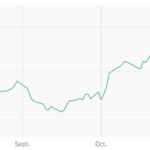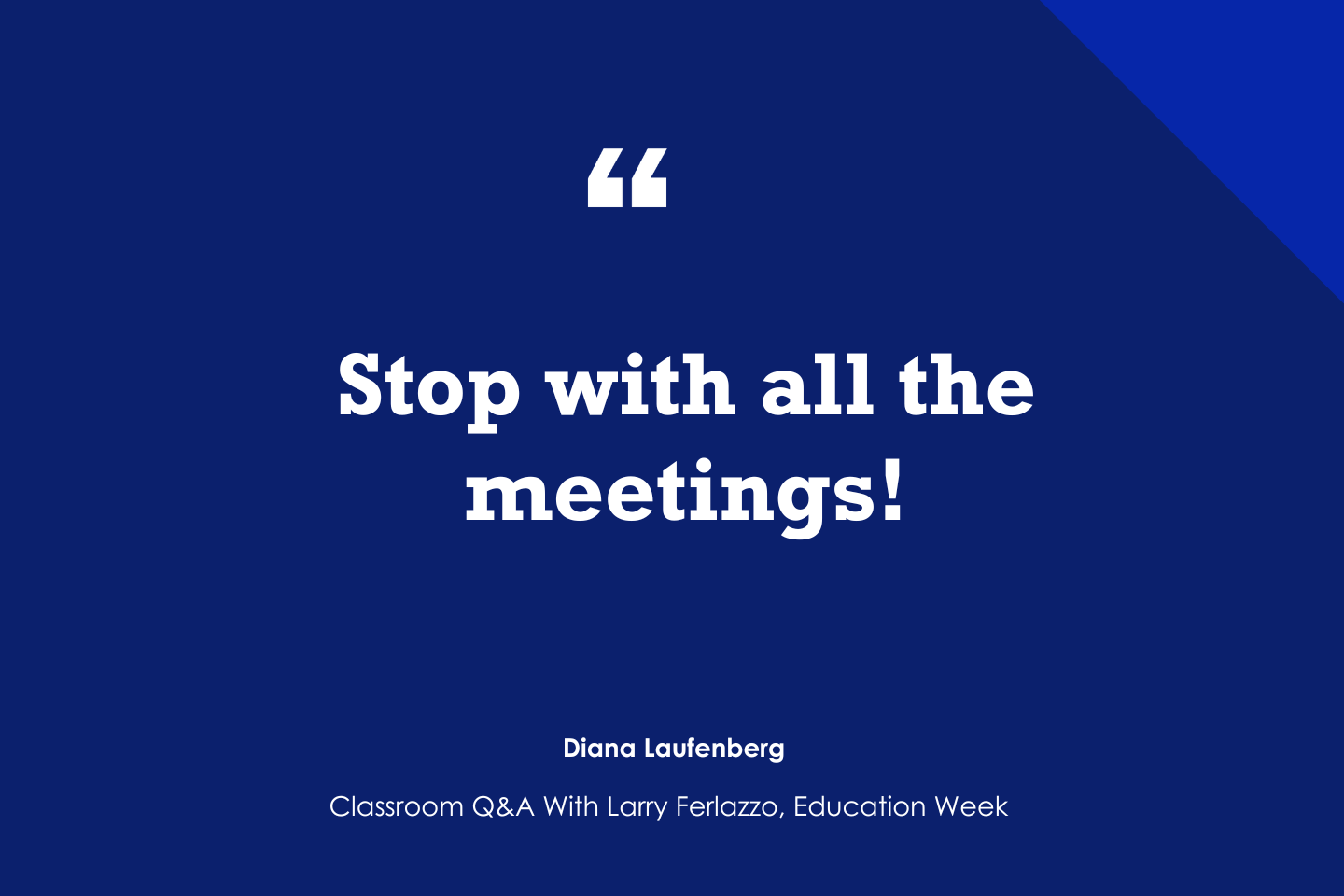Following intense, sometimes violent protests on campuses, colleges and universities are taking steps to encourage better and more civil dialogue and debate among students who disagree.
Some schools are offering new guidance and coursework around how students should speak to one another in an effort to bridge deep differences. At the same time, they’re tightening restrictions on campus protests related to the war in Gaza, and cracking down on protest tactics with heightened enforcement.
We explore the new approaches and talk with experts about the efforts to help students speak across their differences.
Scroll to the end of this transcript to find out more about these topics.
Listen to the whole series
TRANSCRIPT
(Sound of campus protest)
Kirk: After a year of intense and sometimes violent protest on college campuses … this fall’s orientation sounds different.
Orientation video: Colleges and universities tend to bring together people of different backgrounds, faiths and opinions. …
Kirk: Listen to this freshman orientation video some schools are using now, Jon.
Orientation video: Though it may not seem like it at first, making an effort to talk and listen to those who you disagree with can have a lasting impact on your campus culture.
Kirk: The video is produced by the Foundation for Individual Rights and Expression, which describes itself as a nonpartisan group that defends student and faculty free speech. It’s called “Talking Across Differences.”
Orientation video: We limit ourselves when we only engage with similar worldviews. In this setting, we become less curious, more hostile to perceived differences and less reflective.
Jon: This is where we are, Kirk. The political and social climate on some campuses has gotten so bad that colleges have to teach their students how to have a conversation.
Kirk: From the University of California to the University of Wisconsin, Rutgers to Harvard, colleges are amplifying or tightening their free speech and protest policies. The stated goal is to manage campus demonstrations, especially in light of the recent unrest over the Israel-Hamas conflict.
So some administrators and nonprofits say they’re stepping in to help improve civil discourse.
We’re going to dive into what’s really going on and then explain what it means for you.
Music:
Kirk: This is College Uncovered from GBH News and The Hechinger Report, a podcast pulling back the ivy to reveal how colleges really work, and why it matters.
I’m Kirk Carapezza from GBH News. …
Jon: … and I’m Jon Marcus with The Hechinger Report.
Today on the show: “The politics of protests.”
The divide on college campuses surrounding the war in Gaza runs deep. It’s changing the college experience for many students, starting with new guidance on student protests and how those rules are communicated and enforced.
Kirk: Yeah. Both the University of California and Cal State systems are cracking down on encampments and unauthorized structures on their campuses. Cal State’s new public assembly policy prohibits things like barriers, tents and even masks that conceal protesters’ identities. The University of California has issued similar directives urging campus leaders to reinforce existing bans on encampments and mass demonstrators.
Jon: These changes come after a rocky spring semester, when protests tied to the Israel-Hamas conflict swept across campuses.
Sound of campus protest:
Jon: And, Kirk, there could be financial consequences. California lawmakers say they’ll hold back $25 million in state funding for the University of California until it sets up a policy for free speech and protest.
Kirk: Rutgers and Columbia have unveiled their own new policies limiting access to campus to those with school IDs.
Jon: And over at Penn, administrators are limiting microphones, speakers and megaphones and banning chalk pictures or slogans on the walls and sidewalks.
Kirk: These schools say they’re aiming to balance the right to protest with the rights of other students looking to get an education or use a public space. But the new rules raise even more questions.
How will these policies be enforced, especially the bans on masks and encampments? And what does all this mean for student activism, which has long been a part of campus life? If you’re a student or a parent, it can be confusing. So we called up an expert to learn more and to provide some historical perspective.
Robert Cohen: My name is Robert Cohen. I’m a historian. I teach history and social studies at New York University.
Kirk: Cohen says student activism has always been controversial and unpopular with the public.
Robert Cohen: And that means that universities are under pressure to suppress student activism. You’d be surprised with the number of movements that have happened and also the fact that the public disapproved of them — when it was the sit-in movement against racial discrimination in lunch counters. The Freedom Rides, the free-speech movement, the antiwar movement of the ‘60s were all underwater. Politically, they were unpopular.
News commentator: They said they were there to protest the war, poverty, racism and other social ills. Some of them were also determined to provoke a confrontation.
Robert Cohen: And so there was pressure for various reasons to suppress them, as was true last semester.
Kirk: Yeah. In the spring, more than 3,100 students were arrested between mid April and mid June, and that’s higher than most of the 1960s. So it’s tempting, I think, to compare these nationwide campus protests to the anti-Vietnam War movement. But today’s protests have not been nearly as widespread or as violent.
Robert Cohen: That’s one of the reasons why I was so upset about all the arrest, because there’s so little provocation for it. In fact, that’s why the majority of the charges were dropped, because they didn’t really, you know, it wasn’t brazen lawlessness and certainly almost no violence. The largest student protests in American history were in May of 1970, following the Cambodian invasion and the tragic shootings of student protesters at Kent State and Jackson State. The number of students involved in protests there was almost half the student population in the United States — in the millions
Jon: Last semester, the total was in the thousands, not the millions. A new survey finds that two thirds of students say the protests didn’t have any effect at all on their educations. Yet many colleges spent the summer preparing and bracing for more protests. And they’re trying to keep what happened in the spring from escalating.
Kirk: One idea picking up steam is to promote civic dialog in and out of the classroom. Emerson College in Boston, where more than 100 activists were arrested, has launched Emerson together. The new initiative, administrators say, is aimed at creating unity on campus.
Jon: Hamilton College in New York started a program called “Civil Discourse in Local Politics “as part of its freshman orientation, connecting students with local politicians.
Kirk: In New Hampshire. Dartmouth has started “The Dialog Project” to prepare incoming students for tough conversations. And Ohio Wesleyan University is one of the first colleges to provide civil discourse training for all students, faculty and staff.
Is this really what it’s come to? Civil discourse training?
Raj Vannakota: You can’t make assumptions about where students and faculty and administrators are.
Kirk: That’s Raj Vannakota. He leads a program called College Presidents for Civic Preparedness to help those students, faculty and administrators.
Raj Vannakota: Some of them are well on their way, right? They understand this. They do this. They’ve had tons of experience. Others haven’t. And so you have to start with the basic building blocks.
Kirk: Especially for a generation of students that lived through the isolation of Covid-19 and has never seen a national government that wasn’t deeply divided.
Vannakota says these initiatives share a simple goal to promote healthy debate.
Raj Vannakota: We need to take an affirmative posture to ensure that there is free inquiry and debate on our campuses. And I want to make clear here, we’re using the term free inquiry rather than free expression. And the reason that we’re doing that is that free expression is, you know, saying whatever the heck you want. The First Amendment has rules around that. But students really need to experience university life not as this disorienting free for all, but a forum for structured dialog and debate and learning. And that is what needs to be at the center of this. So there’s still work to be done to get there.
Kirk: Jonathan Rauch, a fellow at the Brookings Institution, agrees that students need to learn how to be uncomfortable with some of what they hear. Rauch is author of the book ‘The Constitution of Knowledge: A Defense of Truth.’ And he says what’s needed on campus today is a genuine culture of free speech.
Jonathan Rauch: Students should understand from Day One, it should be written on the catalog, that this is a place where you will encounter ideas that will strike you as potentially offensive, potentially harmful. We call that education.
Kirk: Then, Rauch says, students should be encouraged to take up any disagreements with each other or their professors, and not complain to administrators.
Jonathan Rauch: And indeed, they should be taking positions that they themselves don’t disagree with. That’s very good training for life. And it’s also very good training for toleration.
Kirk: But, Jon, professors on campus tell me incorporating debate into the curriculum is much easier said than done because it’s increasingly tough to bring students together for a civil conversation. And as a result, some students are reporting that they feel less safe.
Take Talia Khan, for example. She told me she always felt safe studying engineering as an undergrad at MIT and performing in the university’s jazz band.
Music:
Kirk: Here she is singing the song “Lonely Moments.”
Khan is the daughter of an American Jewish mother and Afghan Muslim father. She told me that after Oct. 7, she feared for her safety.
Talia Khan: We had students immediately saying, you know, all of this violence is Israel’s fault.
Kirk: She disagreed and says she lost friendships and that her mental health suffered. As the campus climate grew more and more polarized.
Talia Khan: I personally had best friends who I had spent a lot of time studying with, and they told me that the people who were killed in the Nova massacre deserved to be killed because they were partying on stolen land. It took me so long to process that anybody could say that. There’s no excuse for, you know, killing, raping, kidnapping innocent people.
Jon: Since the war in Gaza broke out, students like Kahn have found their campuses deeply divided. Many pro-Palestinian and pro-Israeli activists have just stopped talking to each other. Some have even transferred. With both anti-semitism and Islamophobia on the rise. Researchers at the University of Chicago found that more than half of Jewish and Muslim students feel unsafe on campus because of the Israeli-Palestinian conflict.
Robert Pape: Campus fears are more intense and more widespread than we’ve previously known.
Kirk: Robert Pape studies political violence and is the author of the Chicago report.
Robert Pape: Oct. 7 caught us all by surprise, but especially caught college campuses and universities by surprise.
Kirk: Did your survey find that these students have reason to be afraid?
Robert Pape: Yes. They’re hearing protest chants they interpret as a call to genocide. And that’s scaring not just the target group that they hear, but it’s scaring everybody. They’re observing acts of violence and intimidation on campus.
Kirk: Part of the problem, Pape says, is that students sharply disagree even about the meanings of the words they use during protests.
Robert Pape: You have one group of students who are chanting ‘from the river to the sea’ that don’t think it is implying genocide of the Jews. But you’ve got four million college students hearing that phrase thinking that means genocide of the Jews.
Kirk: For many Muslim students like Harvard junior Jana Amin, the harm they experience is very real. That’s because a pro-Israeli group started publicly identifying Harvard students involved in pro-Palestinian causes. The group put a picture of Amin’s face on a truck that drove around just outside of campus and labeled her among Harvard’s leading anti-semites.
Jana Amin: I was devastated and really scared for my own personal safety on campus. Right? Like walking around, might someone recognize me from the truck and then choose to kind of take it a step further and turn to violence?
Kirk: Before Oct. 7, Amin says she felt comfortable on campus. But the doxing truck changed that.
Jana Amin: Just seeing the truck allowed to stay there with my face, that name on it forever altered how I was going to think about my time at Harvard.
Jon: Jewish students who support Israel are also losing trust in their colleges and civil discourse.
Becca Packer: A lot of people are not willing to have a conversation. It’s, you know, their way or the highway.
Jon: As a senior at Berklee College of Music, Becca Packer was a member of the college’s newly organized Hillel, a Jewish campus group. Sitting in the back of a campus café, she says after Oct. 7, she found what she considered anti-semitic posts all over social media.
Becca Packer: One of my first things that I knew I had to do following Oct. 7 was get on Instagram and try and be that opposing voice — that, you know, opposing perspective that people aren’t going to see. Because I knew exactly what was going to happen.
Kirk: The heated environment Packer describes on and offline has real, concrete consequences for the already battered reputation of American colleges.
Jon: Yeah, the protests on campuses in the spring have only deepened the erosion of public trust in colleges and universities. A survey by the research firm SimpsonScarborough finds trust in higher education has taken a big hit, especially among Republican parents.
Kirk: Nearly half of them said the protests made them trust colleges even less.
Jon: Now, Democrats and independents were less opinionated about the demonstrations. But still, 22 percent of Democratic parents and 30 percent of independents said their trust in higher education has declined. This is coming on the heels of public trust in colleges already hitting all-time lows. Confidence in colleges has dropped from around 60 percent to just 40 percent last year.
Kirk: Among the top reasons: concerns about political agendas and professors and administrators pushing what critics call woke culture. No matter your political views, this is a crisis for American higher education, and its leaders are definitely paying attention.
Lynn Pasquerella: We’re at a crucible moment in American higher education, and we must listen to the critics who are concerned. If we don’t, then we will be complicit in our own demise.
Kirk: That’s Lynn Pasquerella, president of the American Association of Colleges and Universities.
If college leaders just kind of scoff at this, the institutions don’t just fail, right? I mean, there’s more at stake than just the colleges themselves.
Lynn Pasquerella: Democracy fails. Students who receive an American education, a liberal education, are much more likely to resist authoritarian tendencies because they are confident in their viewpoints, even when those viewpoints are challenged. They don’t feel threatened by that. We must return to basics, articulate the value of education not only for individuals but for our society.
Jon: That’s why campus leaders are trying to take action, rolling out these new policies and programs and orientation videos. They’re gearing up for more protests, not just about Gaza, but also with tensions rising around the upcoming presidential election.
Kirk: All of this is happening at a time when culture wars are escalating and the country is polarized and partizan.
Jon: This year, colleges are trying to get ahead of this. To start, Pasquerella says, they’re updating their campus speech and protest policies, focusing on when, where and how protests can happen and making sure those rules are consistently enforced.
Lynn Pasquerella: Campus leaders, I think, have learned that they must be transparent and communicate policies widely and frequently. They have to create and sustain a culture in which there’s respect for diversity points.
Music:
Kirk: So now we’re going to explore how and how quickly the politics of campus protests and even classroom discussions have changed — and what that means for you.
I recently sat down with John Tomasi. He’s the president of Heterodox Academy, a nonpartisan advocacy group of academics working to counteract what it sees as a lack of viewpoint diversity on college campuses, especially when it comes to political diversity.
Heterodox doesn’t fully disclose its funding sources, but Tomasi says its members come from across the political spectrum, and his board has directed him not to seek funding from groups that are active in politics.
Tomasi is a former professor at Brown University, where he taught political philosophy and where he met Jonathan Haidt, the founder of Heterodox, or, as they call it, HSA.
How do you explain Heterodox Academy? What is it?
John Tomasi: It started off in the very nerdy kind of techie kind of way. Lots of scientists tended to all have the same political orientation. And famously, in front of a large auditorium of 400 social scientists, John Haidt said, ‘How many of you are Republicans?’ No one raised their hands. ‘How many of you are libertarians?’ One or two kind of hesitantly did. ‘How many of you are Democrats?’ They all raised their hands. Maybe that’s a problem. Maybe we are in a bubble, group thinking. Maybe we’re not achieving that ideal of thinking for ourselves. And so that’s a reason why the social science might not be as robust as it might be. So it began as this techie little group of academics thinking about problems and research, but then it caught a wave of public interest.
I’ll give you one example that really crystallized it for me. There was a speaker invited to Brown. His name is Ray Kelly, former police commissioner of New York City. And Ray Kelly was giving his talk and some students didn’t want him to come. They were worried about stop-and-frisk, which was a policy that he was very well known for, a policy that had very strong racial overtones. And so the students said, please don’t invite Ray Kelly to come to campus. But they invited him anyway. He came to campus and the student shouted him down. That kind of thing had happened before. But what was different now — this was now 2015 — was that the students who shouted him down took responsibility for shouting him down. They gave interviews to the student paper the next day. They said we’d shout him down again. They weren’t afraid of what they had done. They weren’t worried about punishments for what they had done. They had a kind of almost a brazenness, sort of moral commitment, to believing that shouting someone down might be the right thing to do. And so there’s always been these currents on campus that controversial speakers should be protested. You should argue against them. You should do various things to make it difficult for them — banging pots and pans on the way on the way to the lecture hall. But the idea that shouting someone down might be the right thing to do — that was kind of a new creature on the the campus. And that same creature, that same set of ideas started enacting themselves all across the country in different ways.
Kirk: Around the same time, Tomasi recalls, Yale administrators sent an email to students essentially saying, ‘Please be mindful about cultural appropriation when you plan your Halloween costumes and parties.’ Another administrator sent a follow up message saying, ‘Sure, be careful, but it’s Halloween. Don’t be too worried about the details. Don’t walk on eggshells.’
John Tomasi: And students responded really strongly against that claim that they should be able to be transgressive sometimes and not take it too seriously.
Sound of campus protest:
John Tomasi: Something had changed in the temperature on campuses. Something had changed in the way students were thinking of things.
Kirk: Tomasi says political and social divisions have deepened to the point that they’re threatening academic freedom and changing the college experience, with many students afraid to speak up, adopting a new philosophy of silence is safer. A national survey from Heterodox shows that student self-censorship has been rising steadily. It’s up to around 70 percent now. That means 7 in 10 students report that they actively self-censor.
John Tomasi: The students consistently say that the reason they self-censor is not because they’re afraid of their professors grading them down or doing bad things with which they disagree. They self-censor because they’re afraid of social media and they’re afraid of what their fellow students are going to make them famous for an idea that they floated in class and therefore their social lives and personal lives will be ruined forever, perhaps.
Kirk: I heard one speaker say, you know, we’ve got this generation now who went through puberty on social media. They went through the pandemic on Zoom, and now they’re landing on these college campuses and they haven’t ever made eye contact with someone with whom they might disagree. Would you agree with that?
John Tomasi: I think there’s something to that. But I also think it’s really important to recognize that the problems we’re seeing in this generation of students isn’t solely a problem with this generation of students. In fact, the problems we’re seeing, the patterns of behavior that we’re watching on campus now in really vivid form, are very fixed patterns of human behavior. So people get their social cues, they get their ideas, they act the way they act because of the way the people around them are acting, and to a much greater degree than we like to admit.
Jon: We should point out here that organizations like Heterodox Academy and FIRE, which produced that orientation video we heard, are controversial. Critics say these groups don’t speak for them, that they tend to support and defend conservative, provocative speakers on campus.
But Tomasi says his group is growing. More than 50 colleges have established Heterodox communities led by faculty members, including at Harvard and MIT, Berkeley community colleges and large state universities.
Music:
Jon: Heterodox Academy and fire are coming at this from the outside. At the University of Wisconsin, faculty have launched their own new program called The Discussion Project. It’s a training model that’s now catching on at other colleges across the country.
Katherine Cramer: Students are afraid of each other.
Jon: Katherine Cramer teaches political science at Wisconsin.
Katherine Cramer, in class: So welcome, everybody. It’s so great to see so many faces I recognize from years past.
Jon: And since the pandemic, she’s been participating in the program.
Katherine Cramer: They’re afraid to talk about politics, but it’s bigger than that, right? They’re afraid of saying something that will be posted online and go viral and make them feel bad about themselves. They’re afraid of being publicly shamed.
Kirk: Like John Tomasi, Cramer says, the idea that silence is safer is now widespread. Even in her classroom, with the door closed.
How quickly has the college experience changed in this way?
Katherine Cramer: Fast, I think. I mean, the cohort of people that we’re seeing of traditional college age come through colleges now have this scar from the pandemic of not having the experience of like developing the social skills through in-person interaction in that age that they were in, I guess it would have been middle school now, right, for some of the college students. And that, layered on top of this very toxic political environment, I think, has just contributed to this sense that silence is safer. Like, the best approach is to not interact and not say anything.
Jon: As an educator expected to lead freewheeling discussion. Cramer says it’s increasingly hard to get students to talk and have civil conversation if they disagree. Instead, she says, they’re staring at their phones.
Katherine Cramer: Yes, and even to the point where I’ve said, ‘you know, I just want to point out to you all that when you’re done talking about that, like, using the discussion protocol and talking about the course content, you can talk about anything. Anything. I’m not going to like get mad at you for not talking about the course content. You can talk about anything.’ And still, they’re silent.
Jon: As a political scientist, Cramer notes that her students are part of a broader political environment in which Americans are being encouraged by their leaders to be suspicious of each other.
Katherine Cramer: There’s an us and there’s a them, and you don’t want to engage with the other side, because not only are they the other side, they’re evil. And if they get control, if they get a hold of you, the world is coming to an end. Like, that’s the environment we all are in, including these college students.
More information about the topics covered in this episode
Understanding campus fear report (University of Chicago)
On campus, Jewish and Muslim students fear for their safety (GBH/The World)
Jewish colleges open doors wide to transfer students (GBH/The World)
Why these college students say they aren’t participating in protests (GBH/NPR)
U.S. Confidence in Higher Education Now Closely Divided
Jon: So what does The Discussion Project suggest that people do to change this? First, it says that everyone should get a turn leading the discussion.
Katherine Cramer: It makes it like very egalitarian in who’s who gets control and who gets to speak. But also helps us understand how to ask questions about the course content that allows people to bring in who they are as human beings.
Jon: With a presidential election looming. Kramer says figuring out how to hold civil, constructive conversations in a classroom matters far beyond the campus.
Katherine Cramer: You know, it’s a big deal, because what goes on in college is an indicator of what’s going on in other parts of American life. But also because generally we’re talking about young people, and they are the future of this country. And many of these people, for better or for worse, are going to go on and be leaders in our political system. And so, if the skills that they’re developing in college right now are silence is safer, do not engage with people of different opinions or you’re going to be harmed — that doesn’t bode well for the future of our political system.
Kirk: This is College Uncovered, from GBH News and The Hechinger Report. I’m Kirk Carapezza …
Jon: … and I’m Jon Marcus. We’d love to hear from you. Send us an email to GBHNewsConnect@WGBH.org. Or leave us a voicemail at (617) 300-2486. And tell us what you want to know about how colleges really operate. We just might answer your question on the show.
This episode was produced and written by Kirk Carapezza …
Kirk: … and Jon Marcus, and it was edited by Jeff Keating.
Meg Woolhouse is supervising editor.
Ellen London is executive producer.
Production assistance from Diane Adame.
Mixing and sound design by David Goodman and Gary Mott.
Theme song and original music by Left Roman out of MIT.
Mei He is our project manager, and head of GBH podcasts is Devin Maverick Robins.
College Uncovered is a production of GBH News and The Hechinger Report and distributed by PRX. It’s made possible by Lumina Foundation.
Thanks so much for listening.
The post College Uncovered, Season 3, Episode 2 appeared first on The Hechinger Report.
Following intense, sometimes violent protests on campuses, colleges and universities are taking steps to encourage better and more civil dialogue and debate among students who disagree. Some schools are offering new guidance and coursework around how students should speak to one another in an effort to bridge deep differences. At the same time, they’re tightening
The post College Uncovered, Season 3, Episode 2 appeared first on The Hechinger Report. Higher Education, College Uncovered, Higher education access, Higher education affordability, Higher education completion The Hechinger Report







